Looking for ways to save money in the garden? 12 clever, low-cost ideas for reusing and recycling in January
Discover simple ways to save money in your backyard this month, while boosting your eco credentials


If you're looking for ways to save money in the garden, you're not alone. January is a time of planning and prepping in the garden for the year ahead, but of course, it can also be a lean month financially. When we are in full planning mode, it is tempting to head straight to the garden center to stock up on seeds and new tools, however, the costs can add up pretty quickly.
Luckily, there are many eco-friendly and sustainable approaches to creating backyard ideas on a budget and cost-savings in the garden. And by embracing a few thrifty ideas, you will have more to spend on beautiful containers or soft furnishing additions to your patio, come spring.
Whether you're reusing household items in a new way, or engaging with your local community to swap and source garden supplies, thinking outside the box is a productive way to approach saving money in the garden.
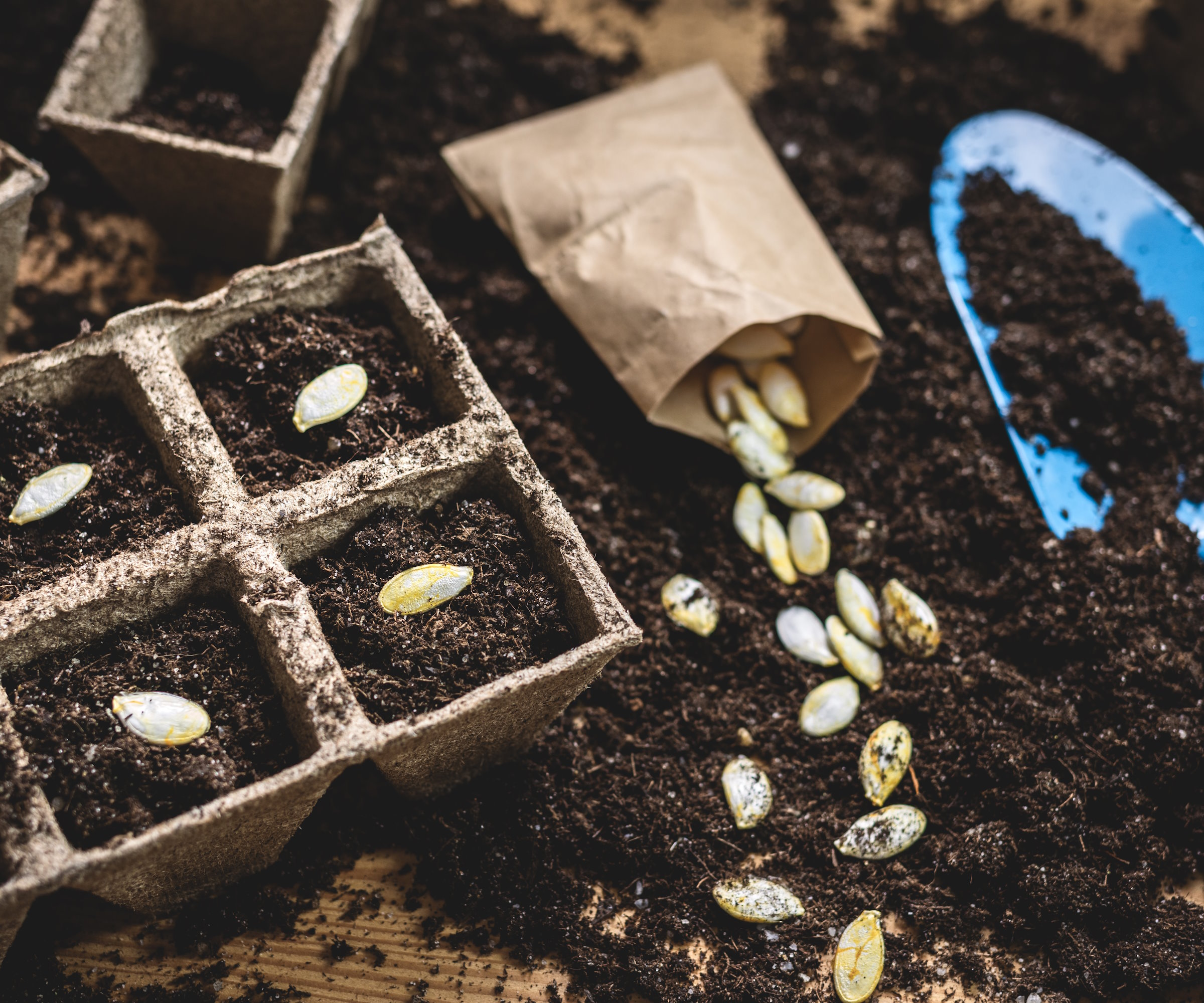
12 clever ways to save money in the garden in January
Not only are these 12 ideas great for saving money in your backyard, but many will help you to reduce your eco footprint too.
1. Make your own compost

Buying multiple bags of compost can quickly add up, so why not try making your own by composting at home? Once you know how to do it, you'll realise it's much easier than you might have thought, and it will help to reduce your environmental impact too.
All you need to get started is a compost bin or dedicated compost heap. Collect a few key ingredients that we all have at home or in the garden: dry fallen leaves, grass cuttings and plant clippings, crushed eggshells, coffee grounds, scraps of fruit and veg peelings. These are all quick to break down, providing moisture as well as nitrogen to your compost pile, which is important.
You can also add cardboard egg boxes and used teabags, but avoid putting certain perennial weeds in there like dandelions, as well as any meat or dairy products.
Design expertise in your inbox – from inspiring decorating ideas and beautiful celebrity homes to practical gardening advice and shopping round-ups.
Nature will take its course over a period of several months to a year or more, gradually breaking down the materials. The organic matter that's produced is your own homemade compost, which can be used for mulching garden borders and filling pots, boosting the growth of plants and vegetables.
2. Choose solar lighting

To save money on your electricity bills, why not use solar lights for your outdoor lighting ideas? This could be everything from solar lanterns, string lights, stake lights or even wall lights.
Solar lights will simply soak up the sunshine during the day and automatically illuminate as dusk falls without the need of a power source. Try to position them in the sunniest spot of your garden, especially during the shorter days.
Solar lights with an IP44 rating means they can withstand rainfall, and would make a wise choice if you live in particularly cold and wet region.
3. Harvest rainwater
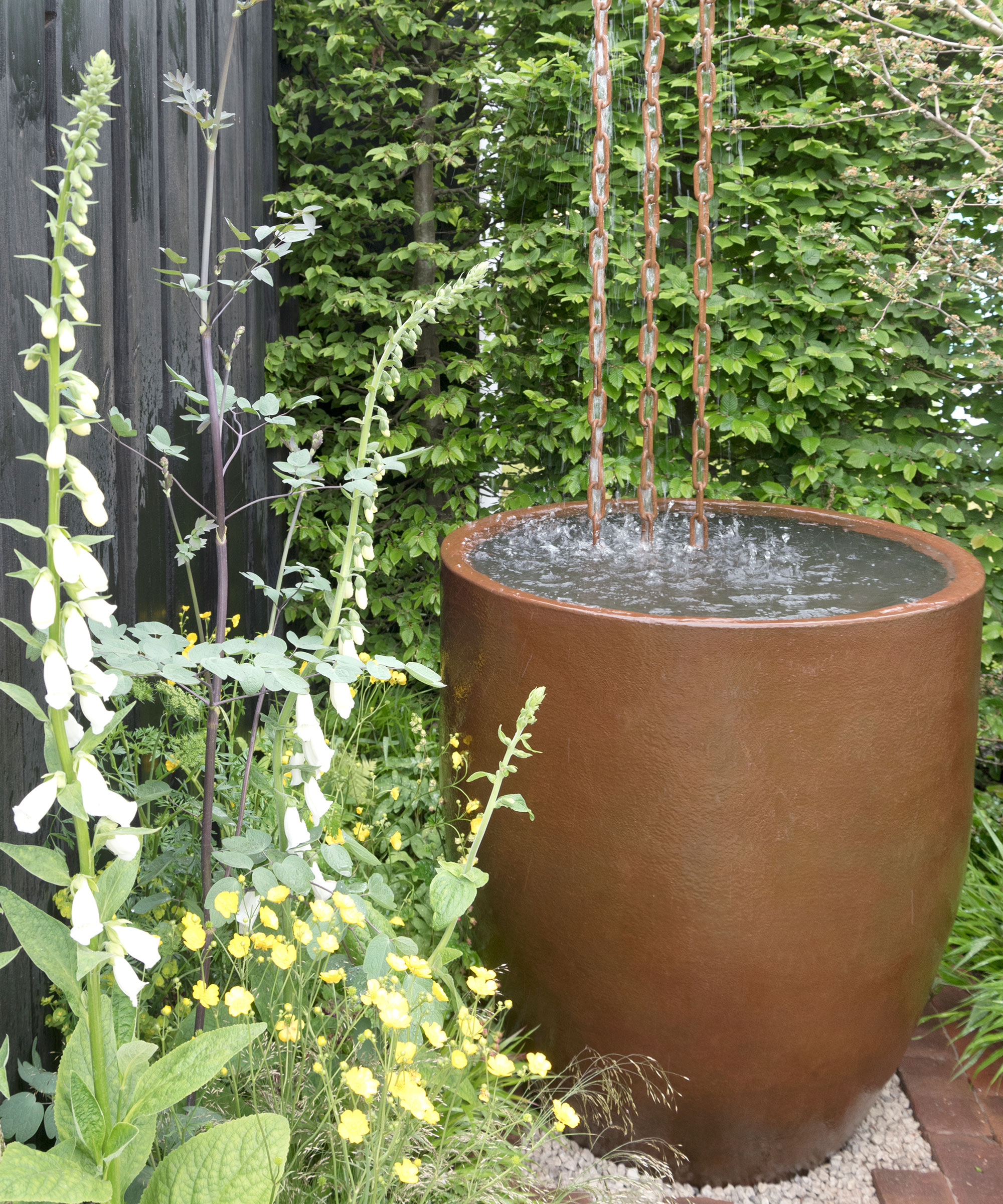
Learning how to harvest rainwater will quickly improve the quality of your plants: rain contains a less acidic pH than faucet water, and as it's a tepid temperature it's not as likely to shock your plant's roots, either.
'A rain barrel or water butt is a great way of storing rainwater for later use. Not only is it saving you money on water bills, but it also gives you that great boosted feeling of being self-sustainable,' says Sean Lade, director of Easy Garden Irrigation.
Simply place a receptacle beneath your rain gutters to save the water that falls from your roof. You can also experiment with rain chains too.
Rain barrels such as this one are readily available online at Amazon, but if you want to try your hand at some DIY and save even more money, learning how to make a rain barrel is relatively straightforward.

Sean Lade is the Managing Director of Easy Garden Irrigation, an industry-leading BALI-accredited company. Sean holds in-depth expertise in gardening and horticulture, with a focus on designing efficient irrigation systems.
4. Upcycle household objects
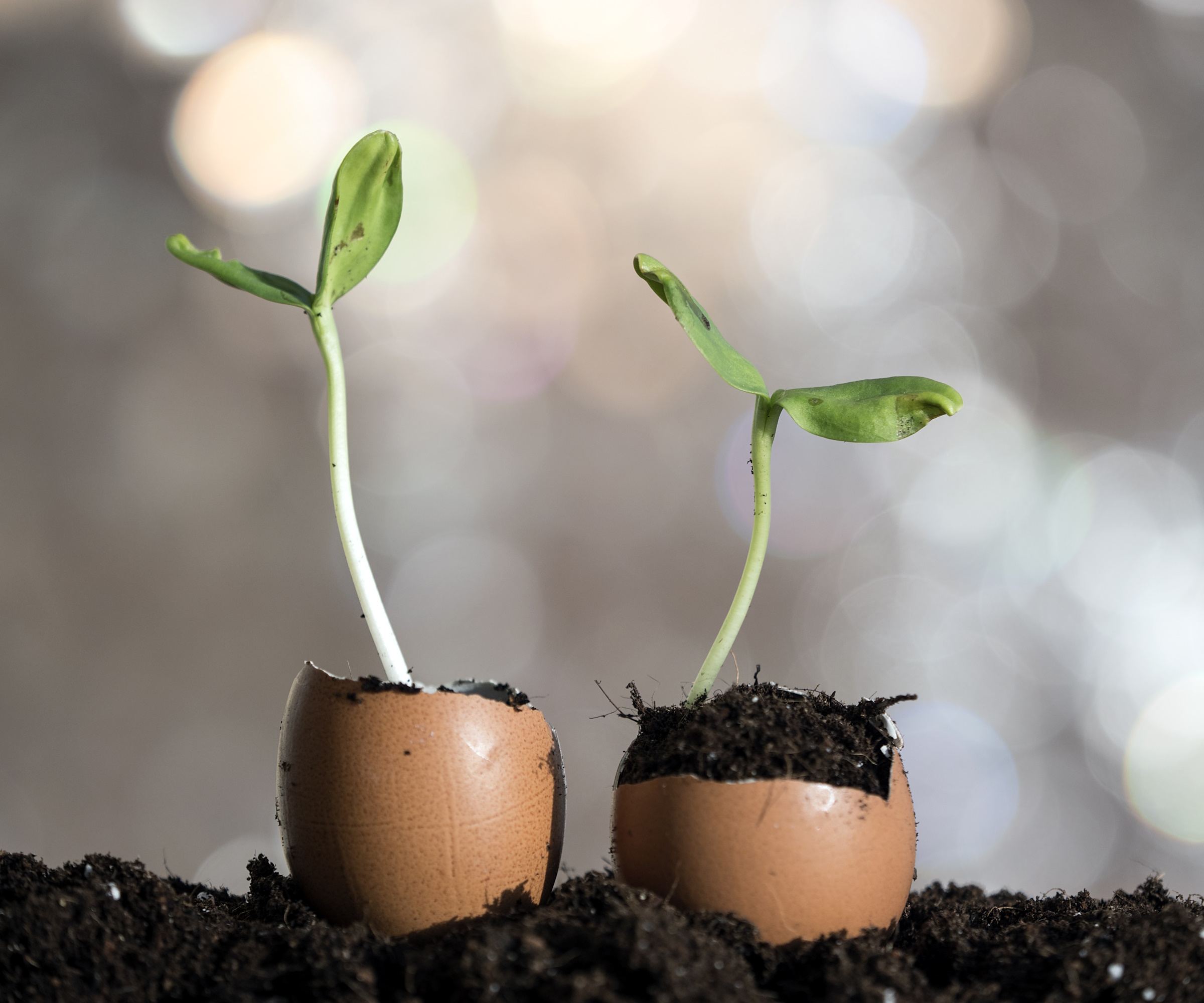
Have you thought about reusing and repurposing common household items into useful garden tools and accessories before you recycle them?
Plastic milk cartons, yoghurt pots, and egg boxes are examples of items that can be put to good use in your backyard.
Here are several clever ideas on how to use them:
- Reuse egg cartons to house newly planted seedlings – or even plant in the eggshells themselves.
- Chipped and cracked drinking mugs can easily be repurposed into plant pots, and shards of broken crockery like plates and bowls can be used as 'crocks' to assist with drainage at the bottom of larger garden planters.
- Make a bug hotel from recycled tins tied together with twine.
- Give empty, clean tin cans a second life and use them to hold flowers and herbs.
- Make your own pots using newspaper, which will rot away into the ground after planting.
- You can also use discarded soda bottles as mini cloches for tender plants, or to protect young brassica plants from birds.
5. Save and swap seeds
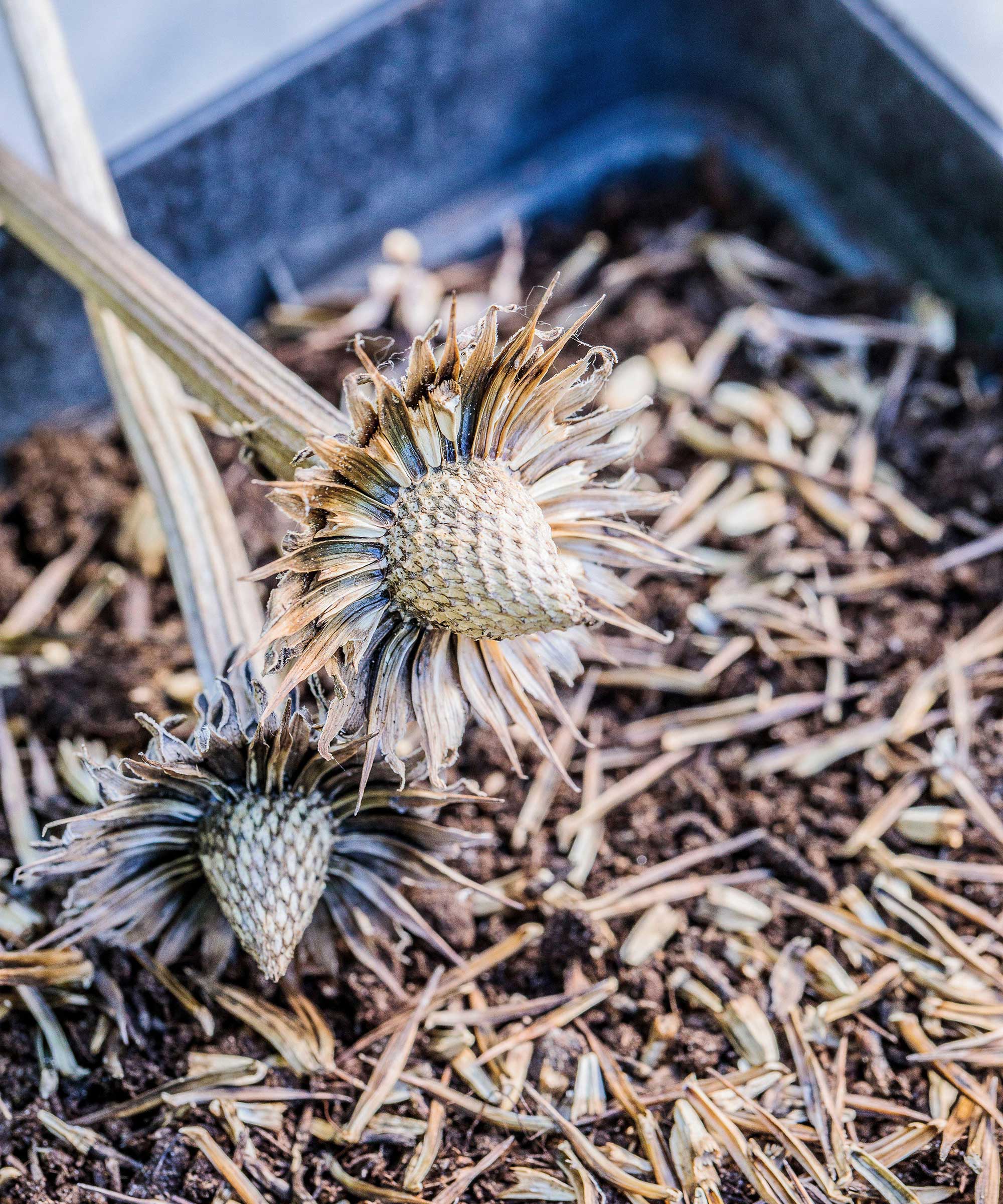
One of the easiest and best ways to save money in the garden is by collecting seeds from flowers and plants you already have. You already know you like those plants, plus you know they'll grow well in your garden too.
You can collect seed from dried seed cases of annual and perennial flowers, and save them in envelopes for sowing in early spring.
Local plant and seed swapping communities are growing in popularity, popping up everywhere from yard sales and librarie to church fundraisers. You can take packets of your saved seeds to swap with your friendly neighborhood plant fans, and perhaps make some gardening friends in the process. A fantastic way to get free seeds.
6. Make your own fertilizer
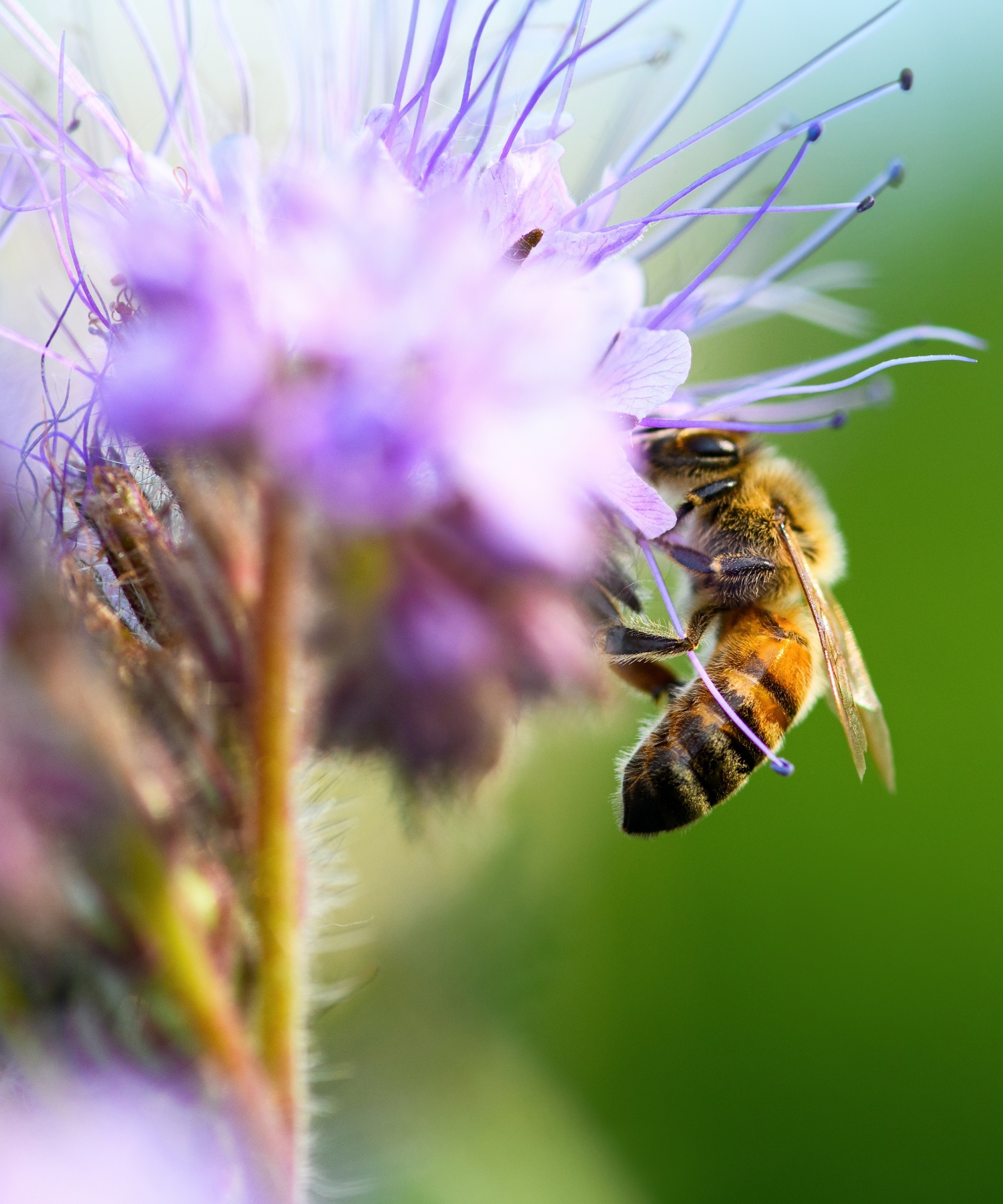
If you've steered clear of how to make plant fertilizer, it may surprise you to hear that it's actually pretty easy to make your own. Two plants particularly well-suited for fertilizing plants are comfrey and nettles.
You can do this by collecting a hessian bag full of either comfrey or nettles, then submerge it in a large container of fresh water for around three weeks. After this time, you will have a rather smelly container of brown liquid.
To use it, add half a litre to a large watering can of water (to when it is the color of weak tea), and this will make an excellent nitrogen and nutrient feed for most garden plants.
Green manure is a useful crop which often grow over winter to give coverage of flower and vegetable beds. Ruth Hayes, expert gardener and contributing editor for Homes & Gardens, says: 'As well as boosting the soil’s nutrient values as they degrade, green manures also provide an excellent sanctuary for beneficial insects such as pest-eating beetles through the harshest months, and can help deter pests too.'
Examples of fast growing green manures are phacelia and clover.

Ruth Hayes is an expert gardener, and formerly gardening editor of Amateur Gardening magazine. She is horticulturally trained, with a qualification from the Royal Horticultural Society, and now regularly shares her expertise with Homes & Gardens.
7. Take cuttings
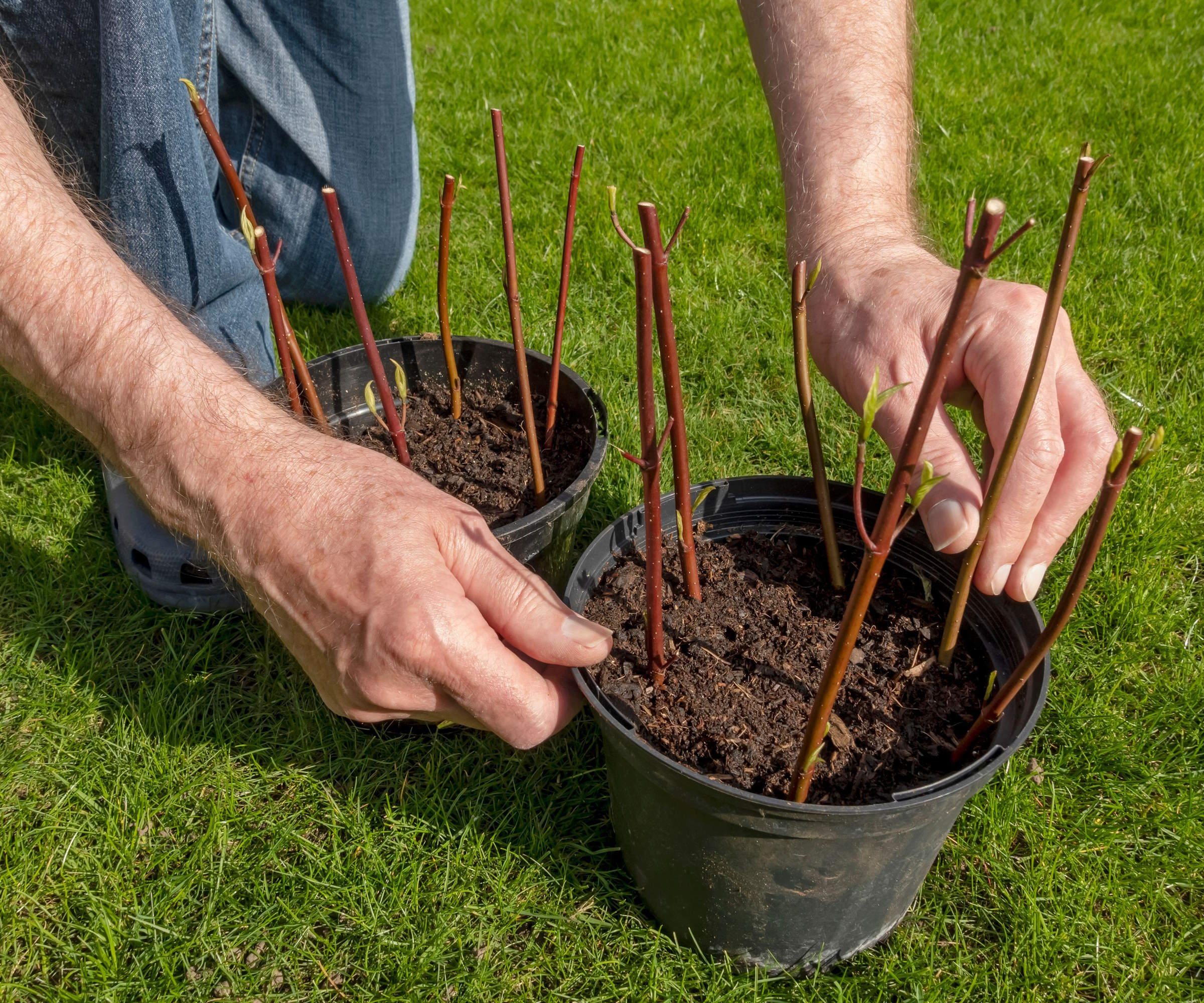
Learning how to take cuttings from plants is a fantastic way to increase your pre-existing plant haul – and it's totally free. You can do this with both hardwood and softwood plants.
For softwood plants, carefully cut the soft new growth from the top of the plant, then pot them up and cover with a clear plastic bag to encourage new growth.
For hardwood plants, cut a healthy shoot below a bud and dip into hormone rooting powder, then pot up and keep them sheltered outside until the following autumn.
You can also divide perennials in your garden and swap with friends and neighbours, or ask friends and relatives for permission to take cuttings of the plants you like in their gardens.
8. Use DIY insect repellents and traps
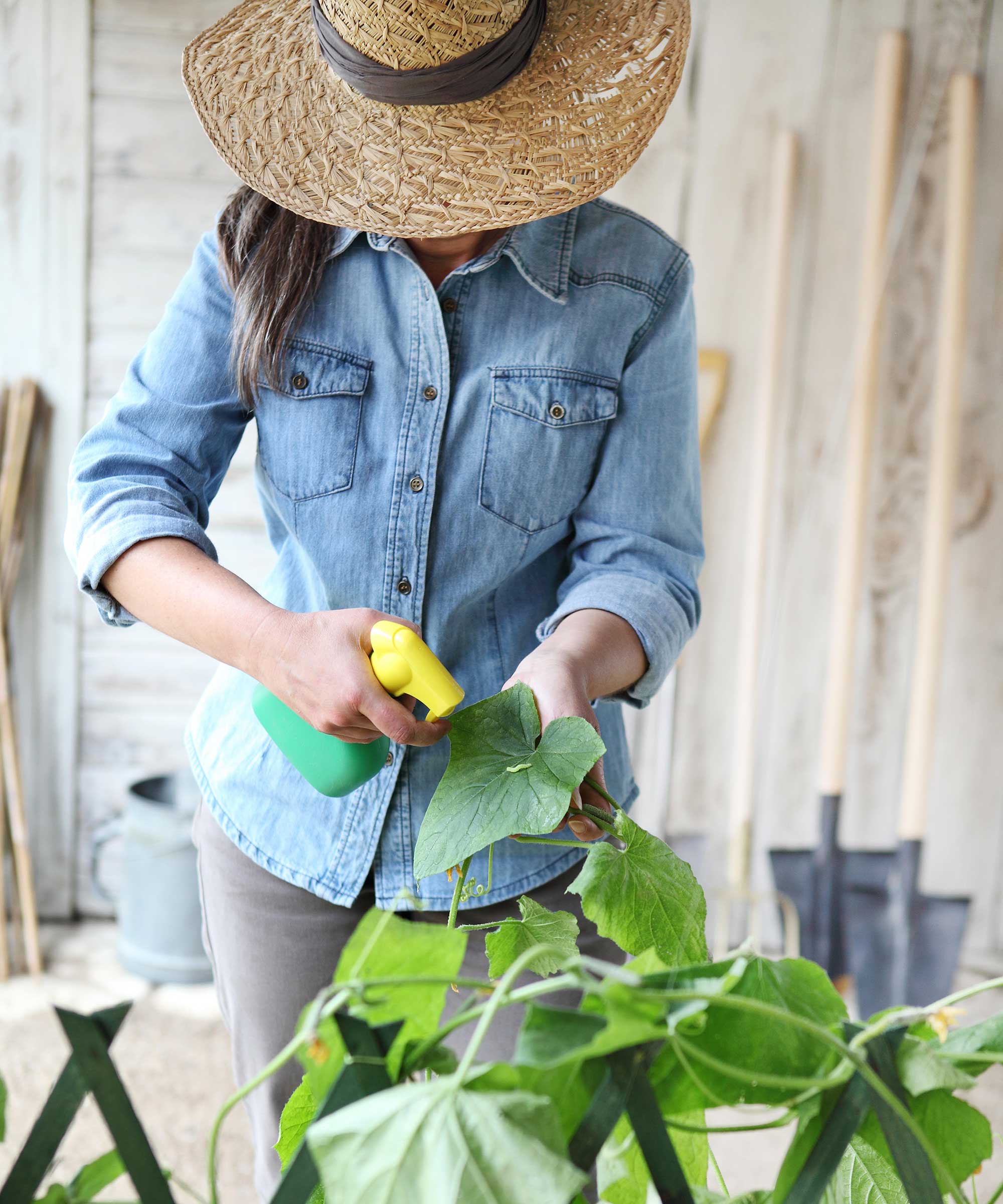
Before shelling out your cash on expensive products, try out some of the best tried-and-tested methods for how to get rid of slugs, snails, and other invasive garden critters.
There are plenty of natural ways to do this. Scattering coffee grounds or scrunched up eggshells around the base of your affected plants will create a gritty barrier that slugs and snails don't like to slither over, while sticking strips of copper tape around the lip of your pots gives slimy slugs a tiny electric shock.
You can also use the best slug repellent plants: once established in strategically appropriate places, strong smelling plants like lavender and rosemary will really help keep slug populations at bay.
If all else fails and you're still facing a slug onslaught, a good old-fashioned beer trap is the ultimate solution. Just half-fill a shallow dish with some beer and wait for the slugs to fall in.
9. Switch to reusable plant labels

More often than not, it’s the small things we buy a lot of that can quickly add to our garden expenses. If you grow loads of seeds, chances are you use up lots of plant labels for everything from your favourite herbs to seedlings for your veg patch. What's more, as many labels are made from plastic, they're not particularly environmentally friendly.
Look out for reusable alternatives instead, such as these attractive wooden tags, which will easily withstand the weather and can be used time and again.
10. Make seedling pots from newspaper
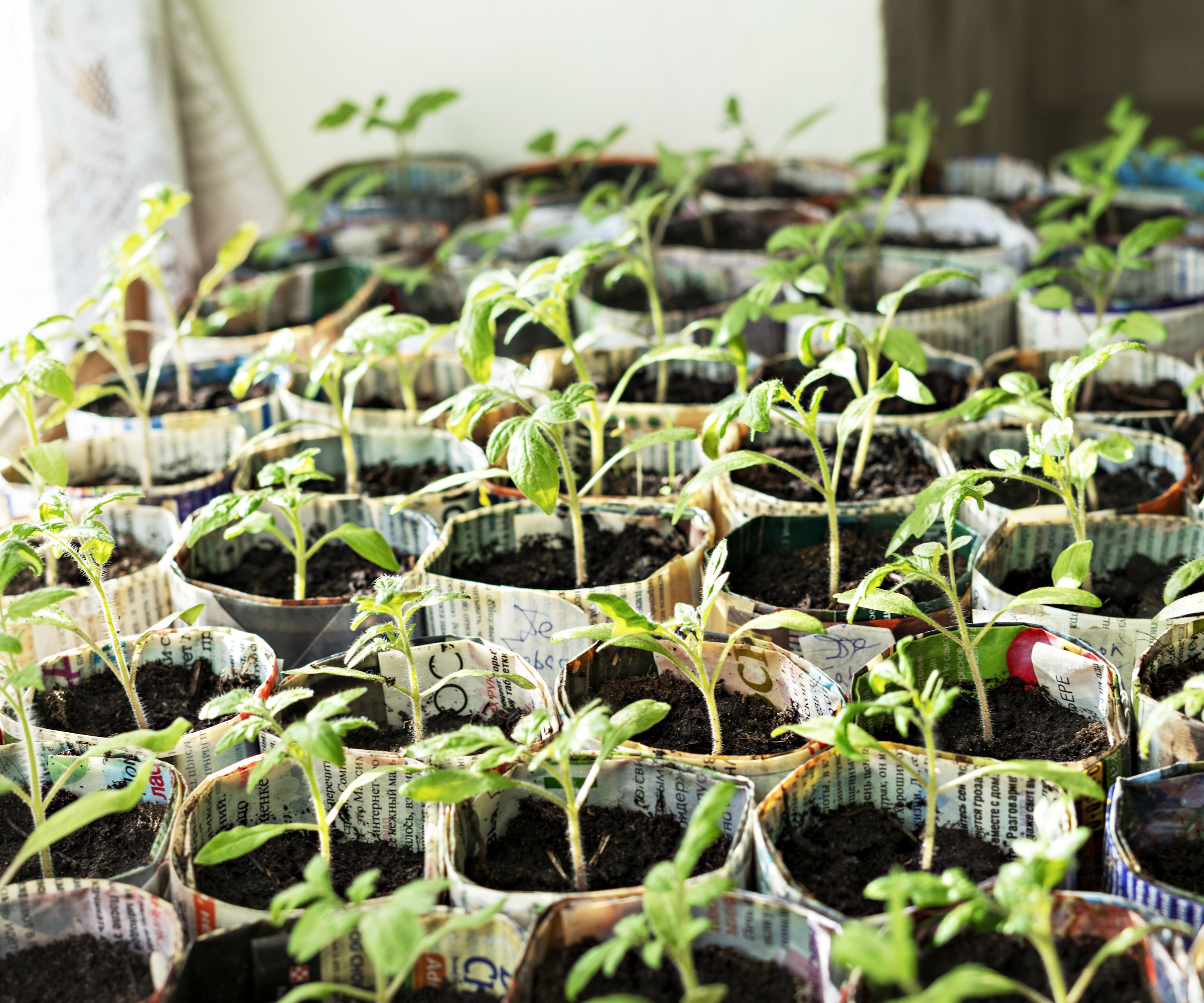
Not only will this idea save you money, it also means you don’t need to buy plastic pots or trays for your seedlings. All you need is a newspaper or newsprint and a handy wooden pot maker. This set by Burgon & Ball, available at Amazon, comes with different sized moulds so you can make various sized pots to suit your seedlings needs.
Then pop in some compost and your seedlings to the finished paper pot. Once the seedlings have hardened off and are ready to be planted outdoors, you can plant them straight into the soil in the newspaper pot and it will naturally biodegrade.
11. Turn pallets into vertical planters

Often available for free, with a little bit of DIY know-how you can transform pallets into everything from outdoor sofas and tables to planters, bug hotels and even pallet garden walls.
For a simple and cheap herb garden, use thrifted pallets as vertical planters by creating troughs that are lined with thick plastic, then filled with compost. Add in your chosen plants and voila – a perfect kitchen herb garden at minimal cost.
Vertical planting is also an ideal way to make the most of the space in smaller backyards, so take advantage of every wall, door, shelf and fence and fill it with edible plants.
12. Clean and repair tools
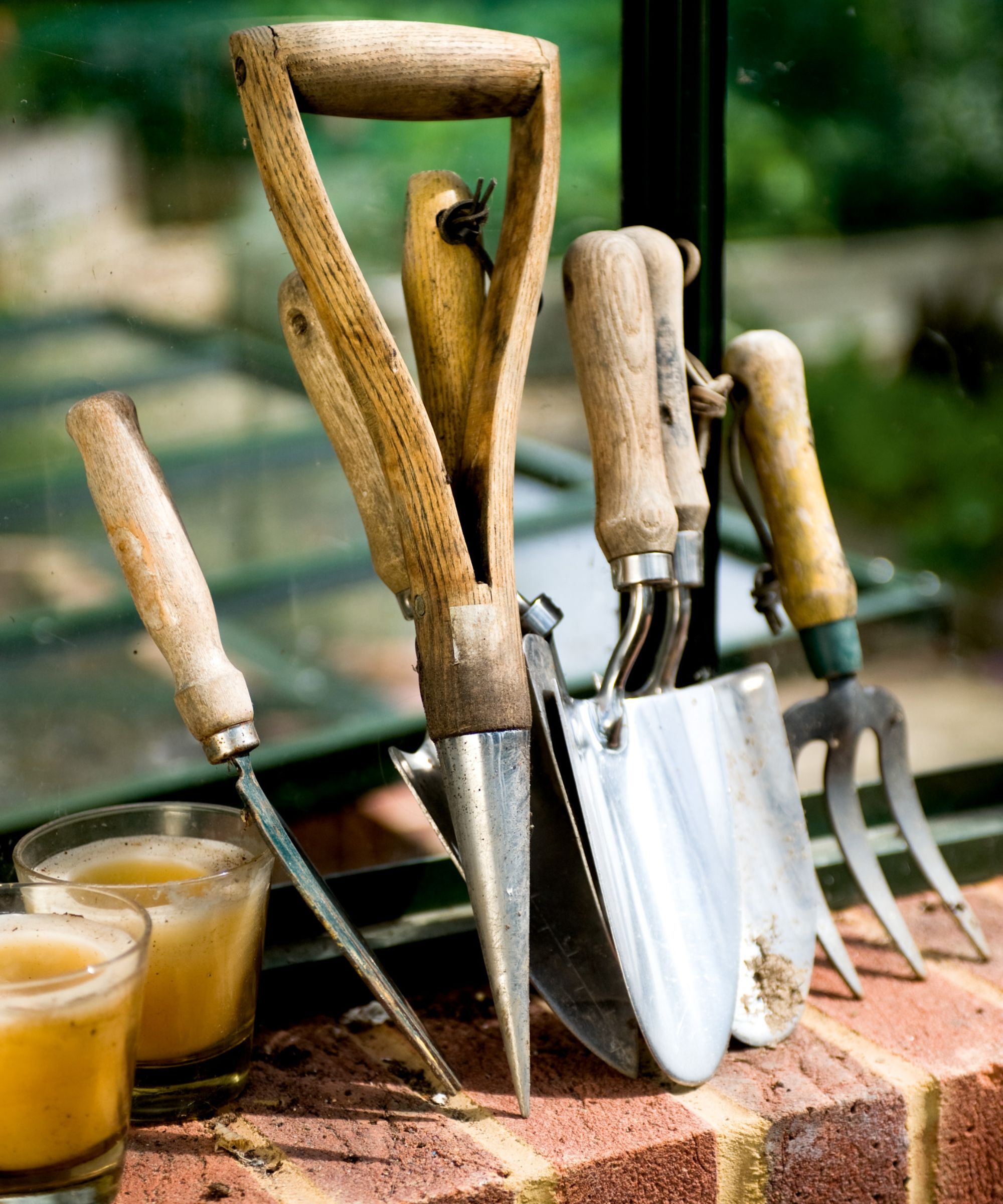
Garden tools can be some of the most expensive things you'll buy for your garden, so it pays to look after them to ensure they last you for years to come.
Learning how to clean garden tools properly will get them looking their best again, while cleaning pruning shears will help to keep them sharp as well as prevent you spreading diseases from one plant to another when pruning.
It's worth building some proper garden tool storage too, so that everything has its own place in your shed and you can tidy tools away after a day working in the garden.
FAQs
How long does it take to make your own compost?
It can take anywhere between several months to a year for compost to be ready, depending on the temperature outside and materials you're using, and how well the compost is aerated.
It's important to loosen up your compost mix regularly. Every few weeks, lift and mix the plant material with a fork to aerate it as it rots down. Without sufficient air, the compost can become compacted, slimy and rotten.
How can I find a seed swap in my local area?
Sourcing free seeds is a super savvy way to start off your plant collection for the new year. You can form a seed swapping circle with friends and family, or look for local gardening groups in your library and community center.
Being a little bit thrifty when it comes to sowing and growing in your backyard is all part of the fun. Plus, reusing and recycling objects is such a great way to begin creating an eco-friendly garden.

Freelance writer and author Flora Baker is a keen amateur gardener and houseplant enthusiast. Her small garden in South London is a constant work in progress as she gets to grips with snail prevention, DIY trellises and what to plant in shady spots overrun with ivy.
- Sophie Warren-SmithContributing Editor
- Rachel BullHead of Gardens